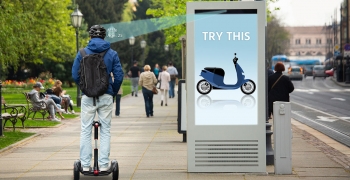Between January ‘22 and March ‘23, global online video consumption alone was estimated at a staggering 6.1 trillion minutes – or about 102 billion hours. As connectivity, including 5G, expands and device availability is transformed by smarter chips and lighter material, we can expect the trend to strengthen and continue on an exponential growth trajectory.
The technical communications domain is not unaffected by this rise in demand for video-based messaging, and we can expect continuous changes across the current digital landscape as a direct result.
Since the 1940s, technical communication has been an integral enabler of scientific advancements, helping connect a product or a service to its end user through structured information. At present, most technical communicators around the world continue to use conventional documentation methods (e.g., manuals, guides, data sheets, etc.) to provide essential information about their offerings.
As per the Society of Technical Communication, its TCBOK (Technical Communication Body of Knowledge) classifies the technical documentation paradigm into four general categories:
- Documents used for explaining products, services, and procedures (e.g., help guides, technical support websites, user guides, service guides, reference guides, and standard operating procedures)
- Documents used for highlighting scientific and technical information (e.g., technical reports, scientific articles, conference presentations, white papers, and book-length projects)
- Documents used for training users to develop certain technical skills (e.g., online tutorials, job aids [quick references], training materials, etc.)
- Documents used for marketing technical products and services (e.g., proposals, marketing websites, catalogs, brochures, and newsletters)
While these conventional technical communication methods continue to be effective, they are falling behind the changing times. This could be because:
- Excess of Verbiage:
Generally, technical documents are quite extensive and cover a lot of information. But with the reduced attention span and the habit of easily accessing the required information within the blink of an eye, many stakeholders today find it difficult to navigate through the 100-odd pages of a technical document in search of a single paragraph of a specific feature.
- Limitations of 2D Illustrations:
Graphics are an integral part of technical communication. Since the beginning, 2D illustrations have been used in technical communications to showcase product specifications and other visual information. But 2D illustrations were never a perfect way to display complex designs because of their aesthetic limitations, especially since the human eye views everything in three dimensions. 2D illustrations therefore fail to show case the blind side because of their inherent challenges.
- Translation Errors:
Translating technical documents into different languages is a standard industry practice. However, translating 100-page documents, even using a translation tool, is prone to translation errors because of various factors, such as different scripts and dialects, grammatical errors, etc. This tends to minimize the value of the communication document.
- Environmental Damage and Space Constraints:
Most of the technical documents are still paper-based, and they are revised occasionally. This tends to take up a lot of physical space, with the use of paper contributing to significant environmental damage.
To overcome these hindrances, leading technical content developers worldwide are exploring newer alternatives. In parallel, global media houses and advertisement agencies have started experimenting with modern marketing techniques, coming up with a unique content strategy to leverage highly engaging visuals that can capture and hold the audience’s interest.
And thus, the domain of “Rich Media.”
“Rich Media” is a digital advertising term used for creating advertisements that feature videos, audio, and other engaging elements.
Studies have shown that the use of rich media has significantly increased customer engagement with brands, which in turn, has helped the brands increase their sales. Technical communicators across the globe have taken notice of this trend and have decided to implement it in their profession as an alternative to conventional technical communication methods.
Technical communicators today have slowly started integrating rich media (i.e., videos, animations, 3D graphics, AR, VR, etc.) into their content strategies to increase the effectiveness of communication mediums. They have also started substituting the old documentation techniques with newer, more effective mediums. This includes:
- Video Essays: A book-length of written technical information is being captured in almost an hour-long video essay, as it is always easier to watch a video and understand its content rather than read through it.
- High-definition 3D Graphics: Parts manuals and catalogs with 3D visuals are subduing the ones with 2D illustrations because of the high-quality graphics used.
- Vocal Dubbing: To avoid translation errors, video essays are being dubbed in various languages, helping the end user to interpret the exact technical information.
- Cloud Services: With the growing availability of cloud services, the demand for physical, paper-based storage has significantly reduced . This is helping minimize environmental damage, besides helping maintain and revise documentations with greater ease than before.
- Animated/Explainer Videos: Help guides are being replaced by animated explainer videos and 3D visualizations.
- ARs/VR Content: User manuals, service manuals, and operator manuals are being upgraded into 3D-animated AVs (audiovisuals), and AR (augmented reality) and VR (virtual reality) content.
- E-learning: Web-based e-learning modules with the help of LMSs (Learning Management Systems) are succeeding the traditional textbook-based skill development and job trainings.
Similarly, a lot of conventional technical documents are about to be taken over by new-found engaging media formats.
However, most organizations today still prefer conventional technical communication methods and are often reluctant to adapt rich media content. this could be because of fears around higher costs and a lack of necessary expertise to carry out the transition.
As the global rate of digital transformation accelerates and Industry4.0 adoption picks up speed, we can expect the above scenario to change – with rich media usage in technical communications emerging as the way of the future. Trends across industries continue to point strongly in this direction, and we feel that a surge in rich media communications is just around the corner. The question is no longer ‘if’ we will see such a change, but just ‘when?’




